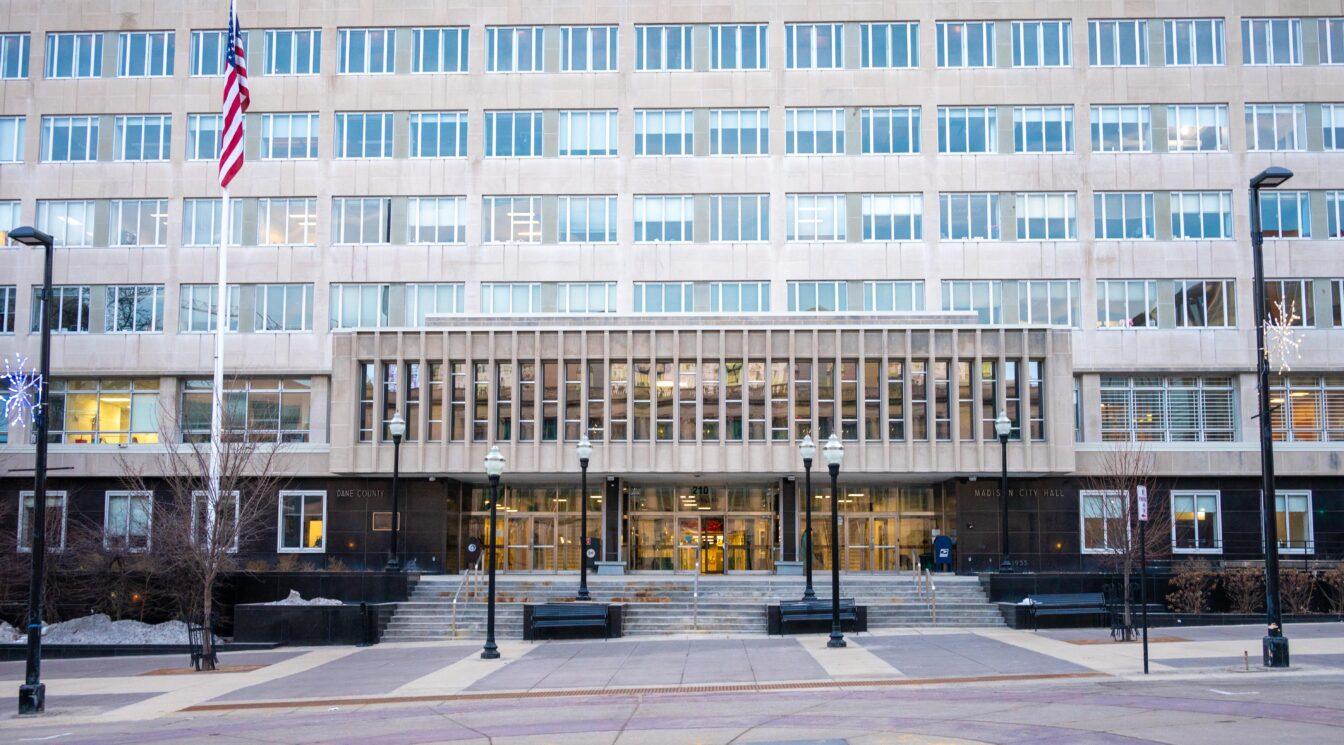Dane County’s Yahara Solar Project was recognized as part of Renew Wisconsin’s 2024 Clean Energy Honor Roll at the 13th annual Renewable Energy Summit “Unleashing the Power of Wisconsin’s Clean Energy Potential” Feb. 1.
When the Yahara Solar Project was announced in November 2020, it proposed the development of about 90 acres of county-owned land in Cottage Grove into a large-scale solar field. The project also set out with the goal of achieving 100% renewable electricity status for all Dane County facilities by 2025, but achieved this goal two years early in April 2023, according to a press release.
By partnering with Alliant Energy, Madison Gas & Electric and Pieper Power, Dane County became the first county government in Wisconsin and the fourth county in the U.S. to operate on 100% renewable electricity, according to the press release.
These collaborations with local utilities played a vital role in achieving their sustainability goal as well as renewable energy credits, according to Director of the Dane County Office of Energy & Climate Change Kathryn Kuntz.
“The county pursued energy efficiency in its buildings, then we started doing rooftop solar projects,” Kuntz said. “[We have] about 17 rooftop solar projects but those provide less than 5% of our electric usage, so we started partnering with our utilities to do bigger solar projects. First, at the Dane County regional airport which provided renewable energy for about 40% of the county’s facilities powered by Madison Gas and Electric, and now Yahara Solar which gets us to 100%.”
The solar panels employ bifacial panel technology that generates energy from both sides of the panel thus preventing energy loss as sunlight reflects off the ground, especially when snow-covered., according to the Yahara Solar Project website.
The energy generated from this project will not only reduce greenhouse gas emissions but also enable the county to achieve its renewable energy goals for decades without increasing energy costs, according to project website. An influx of local jobs as well as prosperity is a culminating point of the project.
“The Airport Solar project illustrates this well,” Kuntz said. “It was constructed during the pandemic when people were losing their jobs. Locally, construction workers had jobs creating that facility.
Yahara Solar’s construction also required skilled labor and the contribution of local union operating engineering, carpenters and electricians, creating approximately 70 jobs during its peak construction last fall, according to the project website.
The project will also significantly mitigate the impact of Dane County’s various climatic issues. Along with reducing greenhouse gas emissions, the renewable energy generated by the solar panel arrays will cut water runoff by about 325,000 cubic feet, reduce phosphorus runoff to area waterways by 370 pounds annually and sequester 72 tons of soil carbon, according to the project website.
The project aids the county in achieving its overarching objective of cutting countywide emissions in half by 2030, as outlined in its Climate Action Plan.
With the Inflation Reduction Act providing incentives, renewable energy costs have reached unprecedented lows, potentially motivating other governments to pursue similar initiatives, Kuntz said.














